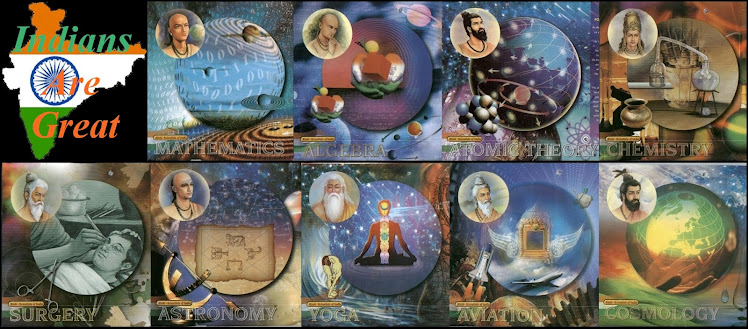A decimal scale known as 'Indus Inch' based on a unit of measurement of 1.32 inches (3.35 cm) has been discovered. Another scale, a bronze rod was discovered marked 0.367 inches. The measurement of buildings revealed that these scales were used with great accuracy. The earliest literary records Vedas had Sulbasutras which were appendices giving rules for constructing altars. They give geometrical information however it was meant only for the religious purposes.Baudhayana (about 800 BC), Manava (about750 BC), Apastamba (about 600 BC) and Katyayana (about 200 BC) composed main Sulbasutras.
These were scholars and priest and not mathematicians in modern sense of the term. Around the middle of the third century BC the Brahmi numerals began to appear. These were the earliest numerals which after certain changes developed into modern numerals used today.
Around 6th century BC the development of new religions like Buddhism and Jainism saw more development in mathematics. The main topics were theory of numbers, arithmetical operations, geometry, and operations with fractions, simple equations, cubic equations, quartic equations and other permutations and combinations.Jaina mathematicians developed a theory of infinite containing different levels of infinity, a primitive understanding of indices and some notion of logarithms to base 2.Astronomy became the base for developing mathematics because it required correct information about the planets and other heavenly bodies.
Religion also played a major role as accurate calendars were required to be made to observe the religious ceremonies at the correct time. Mathematics remained an applied science during the ancient time where mathematicians focused on developing methods to solve practical problems. In second century AD Yavanesvara translated Greek astrology text (120 BC) popularizing it by adding Indian cultural icons using Hindu images with the Indian caste system. 500 AD saw the beginning of classical era of Indian mathematics. Aryabhata's work contained summery of Jaina mathematics and astronomy. He replaced the older theory of demons Rahu and Ketu with new theory of eclipses. He also introduced trigonometry to make his astronomical calculations based on the Greek epicycle theory.
He solved indeterminate equations with integer solutions.Kusumapura emerged as leading centre of astronomy and mathematics under Aryabhata.The other centre which shot into prominence was Ujjain under Varahamihira who also made valuable contributions to astronomy and trigonometry.Yativrsabha was a contemporary of Varahamihira who worked on the main ideas of Jaina mathematics.
The next important figure of Ujjain school was Brahmagupta in 7th century AD who made significant contributions to the development of negative number system and zero. He also made contributions to the understanding of integer solutions to indeterminate equations and worked on interpolation formulas invented to aid the computation of sine tables. The educational system of India did not allow talented people to take up studies in astronomy and mathematics rather the whole system was based on the traditions handed over to the generations to generations. This helped in preserving commentaries of works done on mathematics. It was common for the mathematicians to write commentaries on their own work. It was considered as divine origin and each family would remain faithful to their revelations of the subject. They did not make any systematic observations. Mathematics was used only as a tool for making astronomical calculations. A contemporary of Brahmagupta Bhaskara I led Asmaka school.He was a commentator on the works of Aryabhatta.
Lalla another astronomer who was born 100 years later became commentator on Aryabhatta.The 9th century saw several scholars like Govindaswami, Mahavira, Prthudakasvami, Sankara and Sridhara.They commented on the works of Bhasker I while Mahavira became famous for updating Brahmagupta's book. This period saw tremendous improvements in sine tables, solving equations, algebraic notation, quadratics, indeterminate equations and improvements to the number system.


I request the author to please contact me on theindoaustimes@gmail.com I shall be glad to have this content posted in my online newspaper
ReplyDelete